
The Southwest in Infrared
by Alexandra Shapiro
Last November I attended Steve Huff’s Southwest Workshop along with about two dozen other photographers from all over the world. We visited some beautiful places in Arizona and Utah, including Antelope Canyon, Rattlesnake Canyon, Horseshoe Bend, Zion National Park, and Sedona. These sites presented extraordinary opportunities for landscape photography. The workshop was also a great opportunity to meet some amazing photographers and do some hiking (Angel’s Landing at Zion was a particular highlight in terms of stunning scenery and a challenging ascent).
At some of the locations I used a specially converted digital camera that captures infrared light. A few years ago, I began experimenting with digital infrared photography, and found that it to be an interesting way to capture unusual and sometimes surreal images. My earlier user report can be seen HERE. It provides some basic background on digital infrared technique and examples of infrared photographs that I took before the workshop.
On this trip, I used a converted Canon 5D, which has an “enhanced color” infrared filter, with a Canon 16-35 F4 L lens or a Canon 8-15 F4 L fisheye lens. Even though the 5D model is almost 10 year old, I have found it works extremely well for infrared work and can produce stunning images when paired with the right lens. (The main downsides are an out-of-date LCD and lack of live view, since manual focus is sometimes necessary for infrared work; personally, I don’t mind the 12 megapixel sensor and have even made some relatively large prints from images taken with this camera.) The 16-35 zoom, a relatively new offering from my Canon, is very sharp, and the image stabilization was particular useful in some spots, because the 5D is best shot at low ISOs and I prefer to shoot at f8 to f16 for infrared landscapes. The lens can also produce some amazing sunstars.
These are a few shots from the trip, taken at Antelope Canyon, Horseshoe Bend, and Zion. All but one of the images was taken with the 16-35. I shot in raw and used Capture One for white balance and exposure adjustments, and then converted the images to tiffs. After that, I used photoshop to swap channels, and tweaked the colors and/or converted to black and white using plug-ins such as Nik’s Viveza 2, Alien Skin Exposure 7 or MacPhun’s Tonality Pro. The same image of horseshoe bend appears in both faux color and black and white, so you can see some of the different possibilities with color and black-and-white infrared technique. There are also a couple of examples with strong flare — some may not like this, but I think the flare that infrared photography sometimes produces can create interesting effects.
Some of my other infrared work can be found here: https://www.flickr.com/photos/alexandrashapiro/collections/72157633129472726/
This is my flickr account: https://www.flickr.com/photos/alexandrashapiro/
And here is another guest post I did for Steve: http://www.stevehuffphoto.com/2014/01/14/user-report-iceland-with-the-leica-m-240-by-alexandra-shapiro/
Alexandra Shapiro

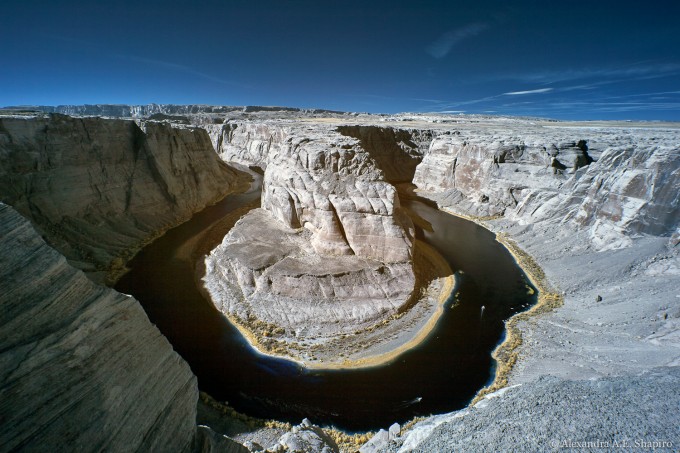

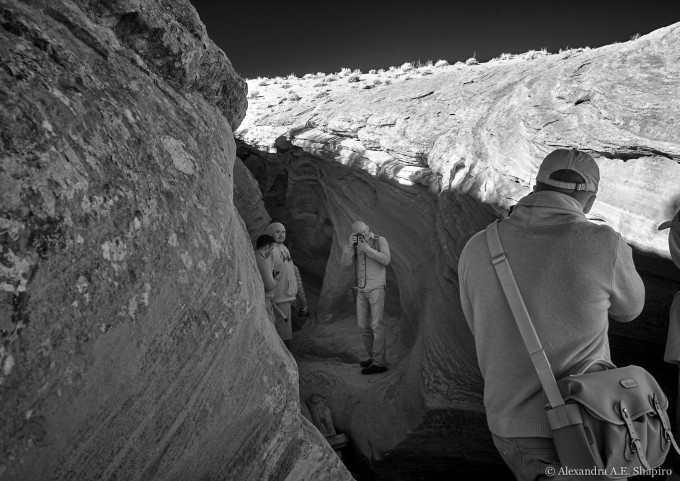
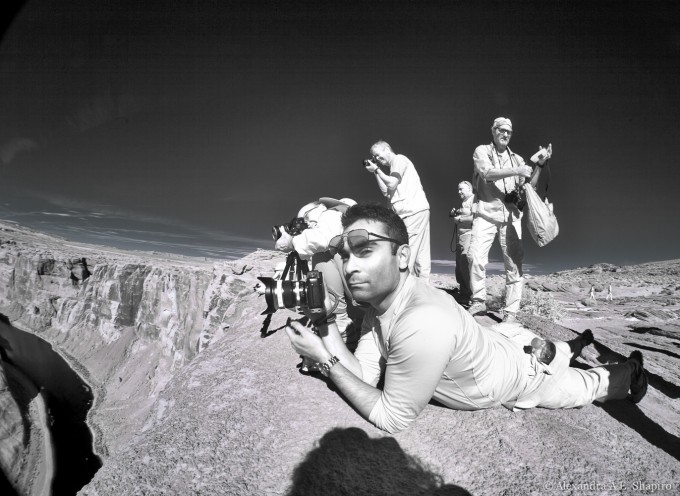
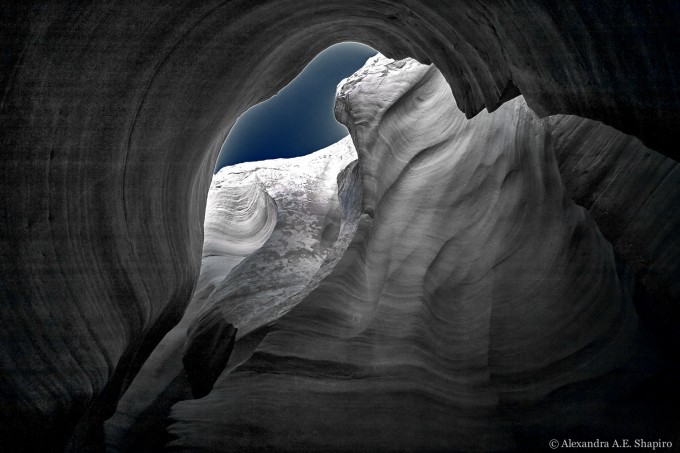

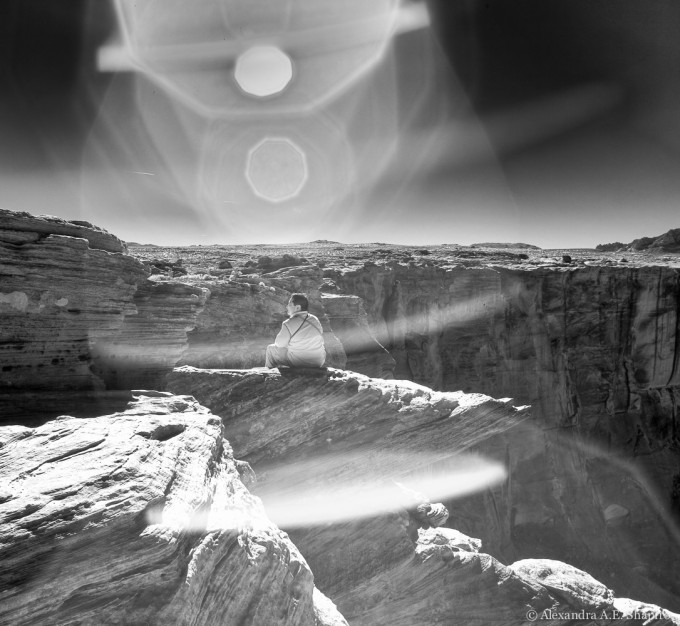




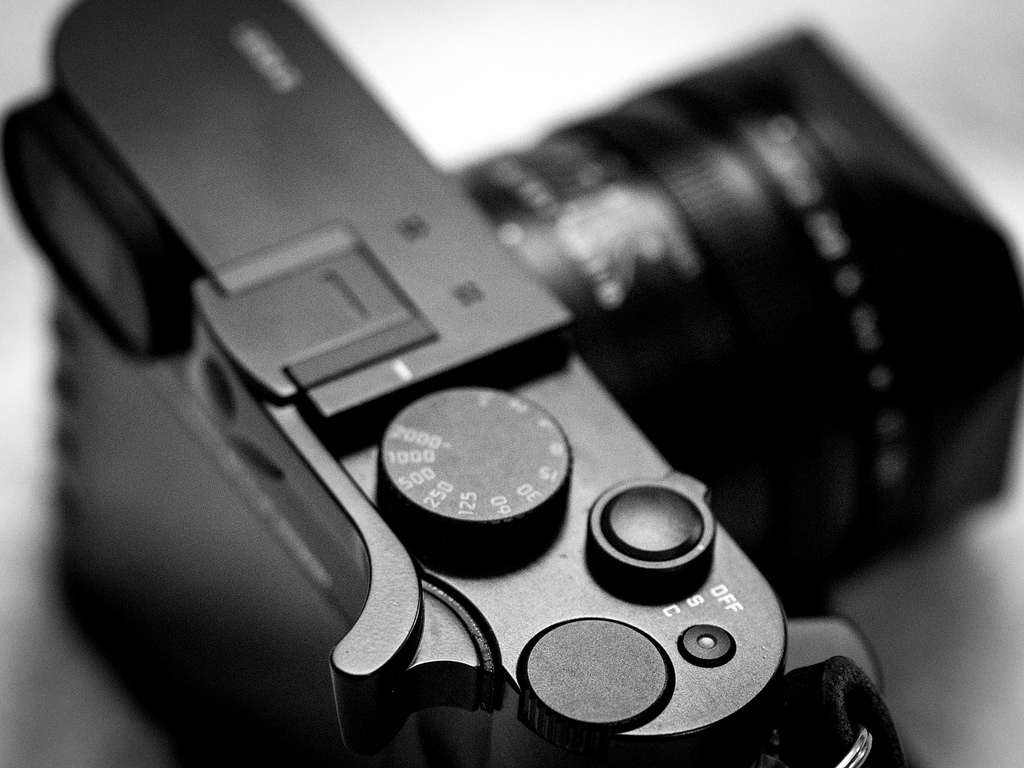

Just stunning, Would love to know your workflow for IR as I am new to this genre. Regards.
Alexandra, I walked alongside you on parts of the Arizona trip but I didn’t come back with one image that compares to yours. Keep shooting!
Nice Alex!
Very interesting photos! I like discovering new ways to take photo! Thank you for sharing!
Alexandra,
The penultimate contre jour image lifts infra red to a new level. Mostly it produces false colours of what can often be mundane landscapes and we are interested purely because we are presented with such an image. But whereas one may marvel over a myriad of normal landscape photographs the appeal, I find, for infra red soon pales. So to make an image stand out, it needs something special. And this is what I find in your penultimate image. Without the photographer in the scene this could well have been another “look at this odd result” type of image.
I’m still not sure how much was luck or what you foresaw, based on experience, but this doesn’t matter with this image. You nailed it, and this is what counts in the end.
Interesting photos. The good stuff. Thanks for sharing.
Interesting.
Maybe there was a star filter too.
People in IR just appear some “transparent”, not that exciting.
The blue hole seems a patch: not my cup of tea
Penultimate shot is a superb image – well done!
Nice stuff. I like the flares. Good old 5D. Still rocks. Reasonably file sizes too.